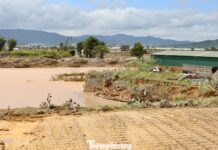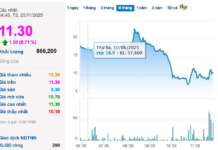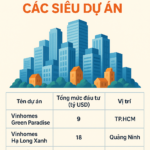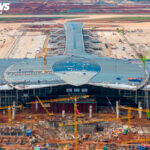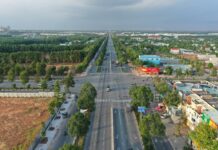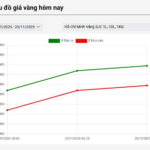Infrastructure development is booming across Vietnam’s provinces and cities, underscoring the Prime Minister’s emphasis on this sector. Vietnam is entering an unprecedented phase of infrastructure acceleration. On August 19th alone, over 250 major infrastructure projects were launched or inaugurated at 80 sites nationwide, with total investment surpassing 1.2 million billion VND—a record in Vietnam’s infrastructure history. On December 19th, 198 more projects worth over 980,000 billion VND will commence.

Several standout projects are shaping Vietnam’s infrastructure landscape, notable not just for their scale but also for fostering connectivity, urban development, and long-term economic growth.
North-South High-Speed Railway: The Nation’s New Backbone
The North-South High-Speed Railway, spanning 1,541 km and connecting 20 provinces, is Vietnam’s largest infrastructure project ever, with a total investment of over $67 billion. Expected to start construction by December 31, 2026, and complete by 2035, it will reduce travel time between Hanoi and Ho Chi Minh City to just 5–6 hours, revolutionizing transportation and reducing pressure on roads, airports, and logistics hubs.
Eastern North-South Expressway: A Key National Highway
The Eastern North-South Expressway, a 729 km highway across 12 provinces with a $6 billion investment, is nearing completion. Six sections are operational, and the remaining six are accelerating to ensure the entire route opens by December 19th. This expressway will alleviate congestion on National Highway 1A, streamline cargo transport, and catalyze new industrial, logistics, and urban zones along its path.
Together with the high-speed railway, this expressway forms a dual backbone for modern, multimodal North-South connectivity, a first for Vietnam.
Long Thanh and Gia Binh Airports: Aviation Hubs for the Future
Long Thanh International Airport, Vietnam’s largest aviation project with a $16 billion investment, is set to welcome its first flight on December 19th. Covering 5,000 hectares, it will eventually serve up to 100 million passengers annually. Gia Binh International Airport, the second-largest with an $8 billion investment, aims to achieve a 5-star Skytrax rating, becoming a key transit hub in Asia-Pacific.
Metro Systems in Hanoi and Ho Chi Minh City: Transforming Urban Mobility
Hanoi and Ho Chi Minh City are revolutionizing urban transport with expansive metro networks. Hanoi plans 15 metro lines totaling 716 km by 2045, requiring $55.4 billion. Ho Chi Minh City aims for 27 lines covering 1,012 km, with nine priority lines (374 km) set for completion by 2035 at a cost of $37.15 billion.
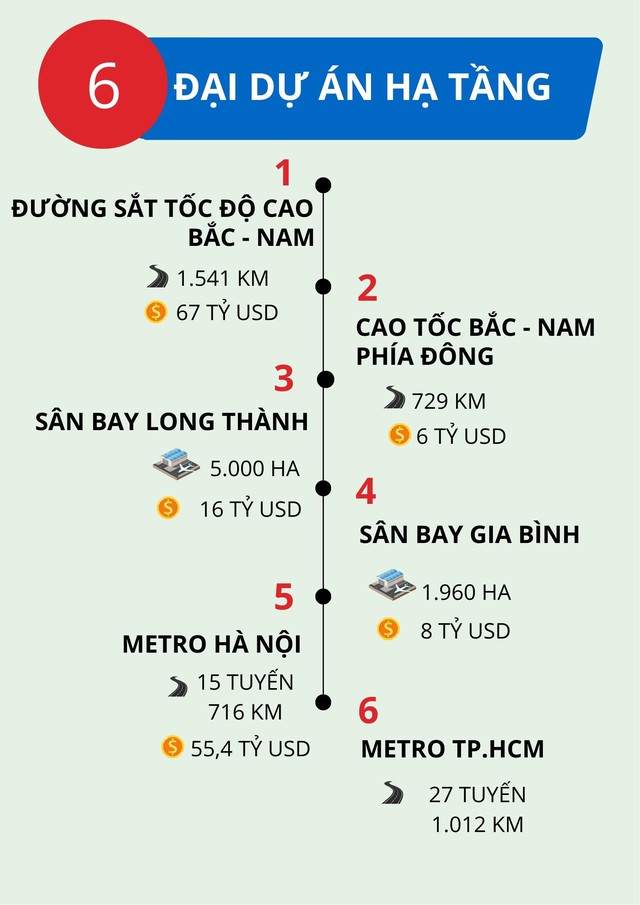
Additional Regional Connectivity Projects
Other key projects include the Lao Cai–Hanoi–Hai Phong railway ($8.37 billion), the Hanoi– Quang Ninh railway ($5.3 billion), and a road linking Gia Binh Airport to Hanoi ($7.1 billion). These initiatives, alongside metros, high-speed rail, and airports, mark Vietnam’s first multilayered transport ecosystem.

Ring Roads: Decongesting and Developing Urban Areas
Ring roads in Hanoi and Ho Chi Minh City are crucial for reducing inner-city congestion and fostering satellite urban and industrial growth. Hanoi’s Ring Road 3.5 ($1.7 billion) and Ring Road 4 ($9.5 billion) are accelerating development in the west and south. Ho Chi Minh City’s Ring Road 3 ($7.6 billion) and Ring Road 4 ($12 billion) will connect Long Thanh Airport, ports, and industrial zones, enabling Transit-Oriented Development (TOD).

(Image Source: NSI)
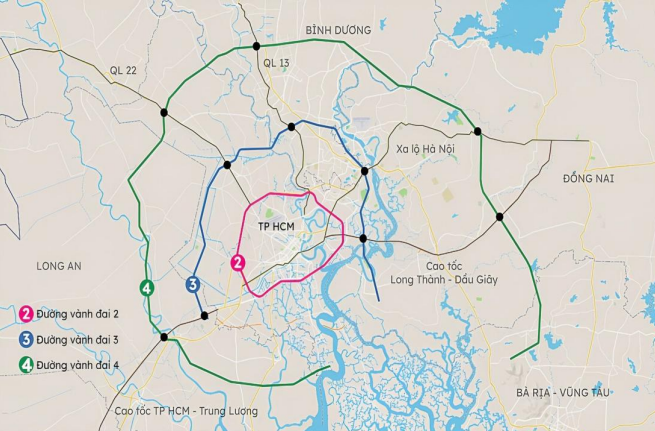
(Image Source: NSI)

TOD: The Future of Urban Development
Transit-Oriented Development (TOD) is reshaping Vietnam’s urban landscape. In Hanoi, western and eastern areas are emerging as modern urban hubs, driven by infrastructure like Thang Long Avenue and Ring Road 4. Ho Chi Minh City’s Thu Duc City and western districts are evolving into tech, finance, and logistics centers, supported by metros and expressways.

(Image Source: Batdongsan.com.vn)
Experts emphasize that TOD is essential for sustainable urban growth, requiring synchronized planning, transparent policies, and public-private collaboration. As Vietnam’s infrastructure accelerates, TOD promises smarter, more connected cities, reducing traffic and fostering a new urban lifestyle.
FChoice is CafeF’s annual awards program, launched in 2021, honoring outstanding economic achievements in Vietnam, particularly in finance. It highlights breakthrough stories shaping the nation’s economy. Amid Vietnam’s digital and sustainable transformation, FChoice serves as a platform to celebrate success and inspire a prosperous future. Join us in recognizing those driving Vietnam’s economic evolution!
High-Speed North-South Railway Project: Direct Investment Emerges as the Sole Viable Model
Renowned economist Vu Dinh Anh asserts that the optimal financing model for the North-South high-speed rail project is direct private investment, wherein the state provides 80% of the capital through loans, and private investors contribute the remaining 20%. This approach surpasses both traditional public investment and public-private partnerships (PPPs) in terms of efficiency and feasibility.
Vũng Tàu Ward Seizes Its ‘Golden Opportunity’
With the imminent operation of Long Thanh Airport and the completion of key infrastructure, Vung Tau is poised to seize a ‘golden opportunity,’ ushering in a new era of growth across tourism, logistics, and real estate sectors.

